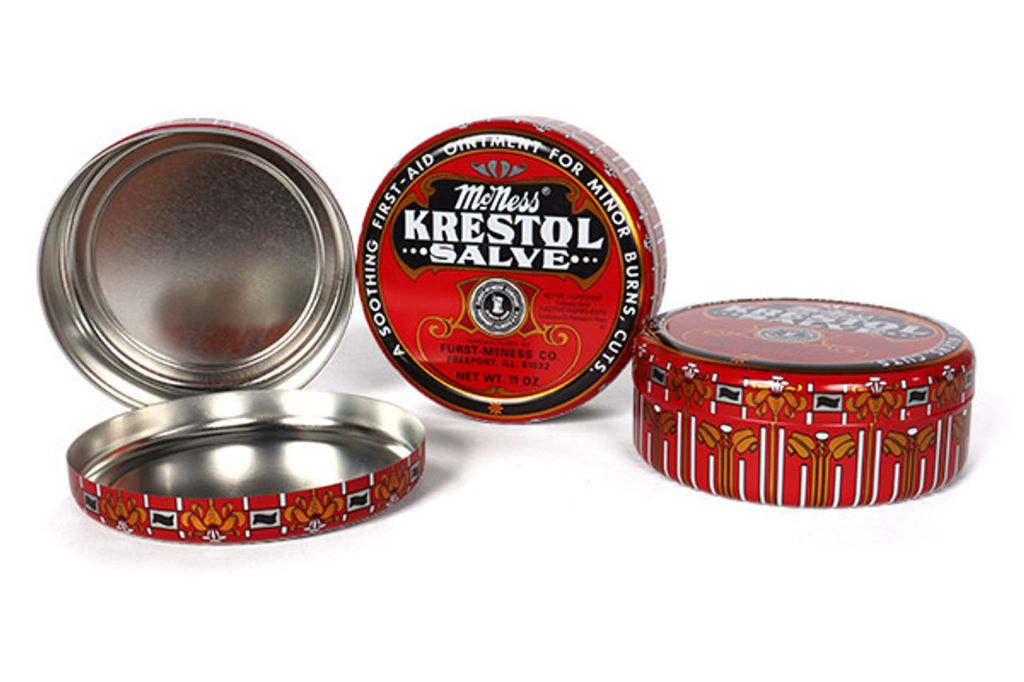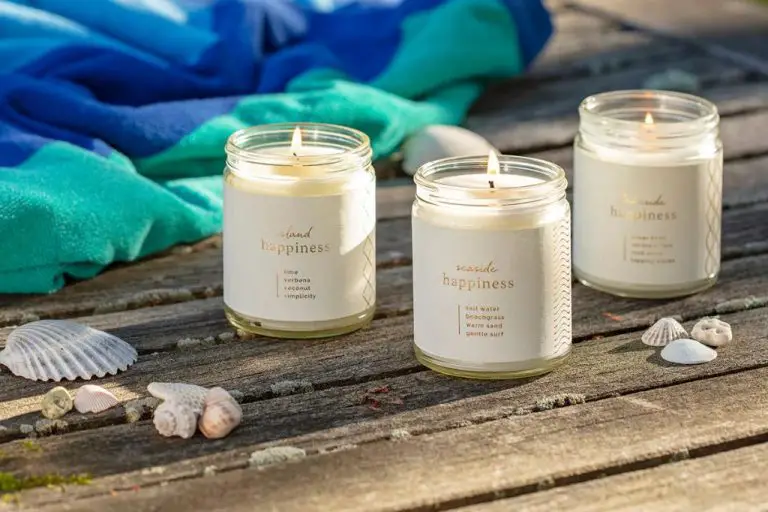What Size Tin For Salves?
Salves are topical ointments made from herbal ingredients infused into oils or fats. They have been used for centuries to help heal skin irritations, wounds, burns, rashes, and more. The oil and wax base allows the medicinal properties of the herbs to be absorbed through the skin.
Homemade and natural salves have seen a resurgence in popularity in recent years. People enjoy being able to customize salves with their own desired herbs and essential oils. Making salves at home enables full control over the quality of ingredients.
Salves are commonly packaged in tins or jars for storage and portability. Tins are one of the most popular choices as they are lightweight, reusable, and help keep salves from melting in warm environments. This article will explore the pros and cons of using tins for salves and provide tips on choosing the right size.
Pros and Cons of Using Tins for Salves
Tins have several advantages that make them a popular choice for packaging salves:
Tins are air-tight and protect against contamination according to https://www.jxblet.com/pros-and-cons-of-tin-cans-you-should-know/. The lid seals tightly to prevent air and moisture from getting in and degrading the product. This allows salves to remain potent and effective for longer.
Tin is non-reactive and won’t interact with ingredients according to https://pakfactory.com/blog/comparing-the-pros-and-cons-of-metal-tin-containers/. This makes it safe for holding salves, oils, butters, and extracts without leaching chemicals.
Tins are very durable and reusable multiple times. They can withstand being opened and closed without warping or becoming misshapen.
Tins can be beautifully decorated with labels, designs, or logos. This gives a homemade salve a professional, high-quality appearance.
However, tins can have some drawbacks:
Tins are generally more expensive than plastic containers. The material costs more and requires additional manufacturing.
Tins are heavier than plastic, increasing shipping costs and carbon footprint.
Common Tin Sizes for Salves
When selecting a tin for salves, there are some common sizes to choose from:
- 0.5 oz tins – These small tins are good for making sample sizes to give out or sell (https://mountainroseherbs.com/push-top-tins). The compact size is easy to carry.
- 1 oz tins – This is a convenient personal use size that will hold enough salve for regular application but not too much to overwhelm. The 1 oz size travels well.
- 2 oz tins – This medium 2 ounce size is great for gifting salves or for a moderately frequent user. The tin holds a useful amount while still being portable.
- 4 oz tins – For more frequent use or to reduce packaging waste, the 4 ounce tin holds a larger supply. This size is efficient if you go through salve quickly.
Consider how much salve you anticipate using or giving away when selecting among these common tin capacities for your herbal preparations.
How to Determine the Right Size
When determining the right tin size for your salves, there are a few important factors to consider:
Frequency and duration of use – If the salve will be used daily, you’ll need more product and may want to choose a larger 2 oz or 4 oz tin. Salves used only occasionally can be smaller 1/2 oz or 1 oz sizes.
Personal use vs. gifts/selling – Making a salve just for yourself, you may only need a small tin. But if giving as gifts or selling, larger sizes around 2 oz are popular.
Samples allow testing new recipes. Before committing to a large batch, first make a few 1/2 oz or 1 oz samples to test out a new salve recipe. This prevents wasting ingredients on a recipe that doesn’t work out.

According to https://prairiestarbotanicals.com/blogs/news/salve-making-tips-and-tricks, it’s a good idea to have extra tins handy, as salve recipes often produce more than expected. Using a sample cup to compare to tin sizes can help determine how much each holds.
Filling the Tins
When filling salve tins, it’s important to leave room at the top for the product to expand as it warms up. According to Prairie Star Botanicals, salve recipes often make more product than anticipated, so it’s a good idea to have extra tins on hand. However, you don’t want to overfill the tins. A general rule of thumb is to fill tins only about 3/4 full.
For easier filling without spills, consider using a spoon to scoop the salve into the tins, as recommended by Essential Wholesale. You can also use syringes designed for cosmetic filling to neatly fill the tins. Wrapping the jar or tin in a dish towel while filling can help steady it and prevent messes, according to tips from Camp Wander.
Labeling and Decorating
Many enjoy customizing their salve tins with labels and decorations. When doing so, keep in mind that labels and decorations should:
- Adhere properly so they don’t fall off. Use good quality sticker labels meant for cosmetics and tested not to peel. Avoid printing labels on regular paper.
- Be food-safe. Stick to label materials and decorations designed for cosmetics that won’t leach ink or chemicals.
- Allow lids to seal tightly. Avoid decorations that get in the way of closing the lid completely.
With proper planning, you can create beautifully decorated tins with labels that convey your brand. Just be mindful of functionality and safety. Test that decorations allow lids to seal fully and won’t leach into the salve before mass producing any designs.
Storing the Tins
Proper storage is important for maintaining the freshness and integrity of salves in tins. Here are some tips for storing tins of salve:
Store in a cool, dark place away from direct heat or sunlight. Heat and light can degrade the ingredients in salves over time. A pantry, cupboard, or drawer works well. According to Humblebee & Me, temperatures between 50-70°F are ideal.
Keep the tins in a dry spot with low humidity. Moisture encourages bacterial growth and can make salves go rancid faster. Make sure the storage area is not damp or prone to condensation.
Store the lids separately or loosen lids slightly. This prevents the lids from sticking to the salve, making it hard to open later. You can place a small piece of plastic wrap or parchment paper between the lid and salve as well.
Check on salves periodically and watch for changes in smell, color, or texture, which can indicate spoilage. Properly stored, most salves in tins will stay fresh for up to 1-2 years.
Reusing Tins
If you want to reuse tins after making a batch of salve, it’s important to clean them properly first. According to Crunchy Betty, you should clean the tins gently with a mild soap and water. Avoid using harsh chemicals or scrubbing that could damage the tin. Thoroughly dry the tin after washing.
Before reusing, inspect the tin closely and check for any dents, rust, or other damage that could affect the quality or safety of the tin. Avoid reusing tins that are corroded or rusty. According to Alo Goods, the tins can typically be reused many times if washed properly.
It’s also important to avoid cross-contamination when reusing tins. Make sure to store different ingredient tins separately. Consider labeling tins if reusing for a different purpose or ingredients. Properly storing cleaned tins until reuse will help maximize reuse potential.
Buying Tins in Bulk
When buying tin containers in bulk, it’s important to find a reputable supplier with good reviews and reasonable minimum order quantities. Popular suppliers like Specialty Bottle and Amazon allow you to buy wholesale tin cans in quantities as low as 12 units. Buying in bulk brings down the cost per unit significantly.
Before placing a large order, calculate your total needs in advance. Factor in some extra tins in case you make errors filling them or want to create extras as gifts. It’s also wise to purchase surplus lids, as these are prone to dents and damage. Having spare lids on hand ensures you don’t end up with nicely decorated tins that can’t seal properly.
Overall, with some planning and research, buying tin containers in bulk is an affordable way to package homemade salves, balms and other products beautifully.
Conclusion
When deciding on what size tin to use for salves, it’s important to consider how much product you’ll need to fill it as well as the convenience of the size. Smaller tins around 0.5 oz or 1 oz are great for portable products or sample sizes. Larger 2 oz or 4 oz sizes allow you to make bigger batches and may be better for gifts.
There’s no one-size-fits-all approach – test out a variety of tin sizes to see what works best for your needs. The right tin size will also depend on the thickness and consistency of your salve. Don’t be afraid to get creative and customize tins with labels, stickers and other embellishments.
Making your own salves can be an extremely rewarding and creative endeavor. Take the time to experiment with different tin sizes and decorative elements until you find a look that you love.


